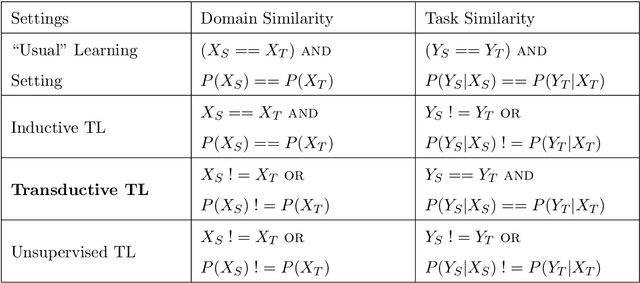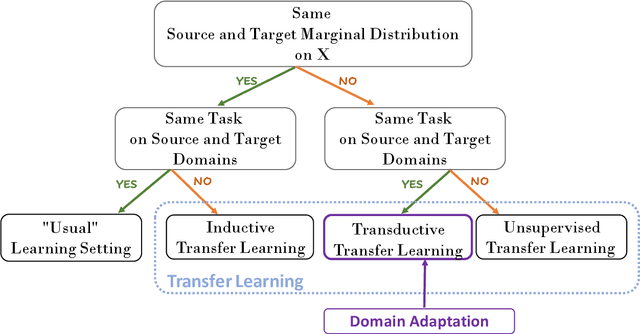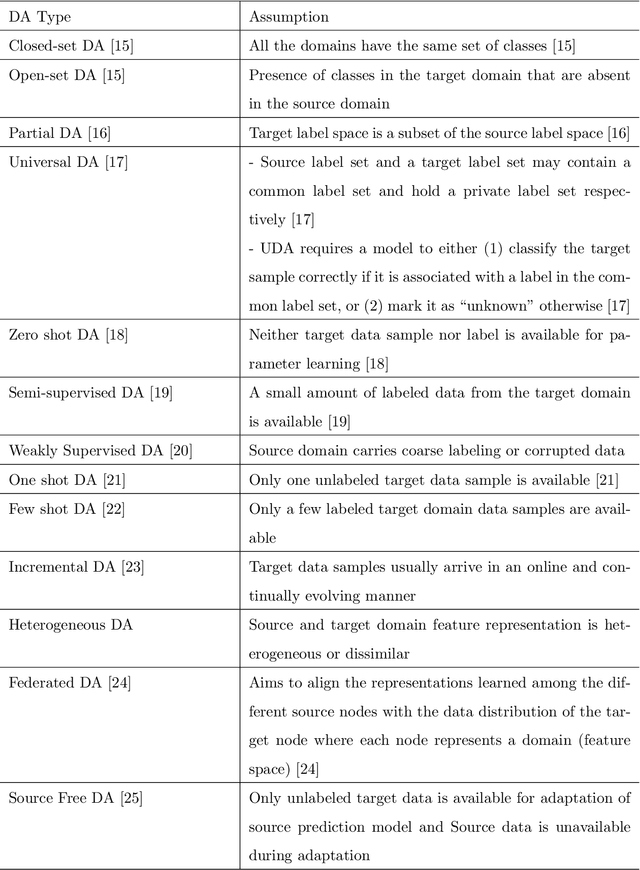Avijoy Chakma
VaCDA: Variational Contrastive Alignment-based Scalable Human Activity Recognition
May 08, 2025Abstract:Technological advancements have led to the rise of wearable devices with sensors that continuously monitor user activities, generating vast amounts of unlabeled data. This data is challenging to interpret, and manual annotation is labor-intensive and error-prone. Additionally, data distribution is often heterogeneous due to device placement, type, and user behavior variations. As a result, traditional transfer learning methods perform suboptimally, making it difficult to recognize daily activities. To address these challenges, we use a variational autoencoder (VAE) to learn a shared, low-dimensional latent space from available sensor data. This space generalizes data across diverse sensors, mitigating heterogeneity and aiding robust adaptation to the target domain. We integrate contrastive learning to enhance feature representation by aligning instances of the same class across domains while separating different classes. We propose Variational Contrastive Domain Adaptation (VaCDA), a multi-source domain adaptation framework combining VAEs and contrastive learning to improve feature representation and reduce heterogeneity between source and target domains. We evaluate VaCDA on multiple publicly available datasets across three heterogeneity scenarios: cross-person, cross-position, and cross-device. VaCDA outperforms the baselines in cross-position and cross-device scenarios.
A Systematic Study on Object Recognition Using Millimeter-wave Radar
May 03, 2023



Abstract:Due to its light and weather-independent sensing, millimeter-wave (MMW) radar is essential in smart environments. Intelligent vehicle systems and industry-grade MMW radars have integrated such capabilities. Industry-grade MMW radars are expensive and hard to get for community-purpose smart environment applications. However, commercially available MMW radars have hidden underpinning challenges that need to be investigated for tasks like recognizing objects and activities, real-time person tracking, object localization, etc. Image and video data are straightforward to gather, understand, and annotate for such jobs. Image and video data are light and weather-dependent, susceptible to the occlusion effect, and present privacy problems. To eliminate dependence and ensure privacy, commercial MMW radars should be tested. MMW radar's practicality and performance in varied operating settings must be addressed before promoting it. To address the problems, we collected a dataset using Texas Instruments' Automotive mmWave Radar (AWR2944) and reported the best experimental settings for object recognition performance using different deep learning algorithms. Our extensive data gathering technique allows us to systematically explore and identify object identification task problems under cross-ambience conditions. We investigated several solutions and published detailed experimental data.
Domain Adaptation for Inertial Measurement Unit-based Human Activity Recognition: A Survey
Apr 07, 2023



Abstract:Machine learning-based wearable human activity recognition (WHAR) models enable the development of various smart and connected community applications such as sleep pattern monitoring, medication reminders, cognitive health assessment, sports analytics, etc. However, the widespread adoption of these WHAR models is impeded by their degraded performance in the presence of data distribution heterogeneities caused by the sensor placement at different body positions, inherent biases and heterogeneities across devices, and personal and environmental diversities. Various traditional machine learning algorithms and transfer learning techniques have been proposed in the literature to address the underpinning challenges of handling such data heterogeneities. Domain adaptation is one such transfer learning techniques that has gained significant popularity in recent literature. In this paper, we survey the recent progress of domain adaptation techniques in the Inertial Measurement Unit (IMU)-based human activity recognition area, discuss potential future directions.
 Add to Chrome
Add to Chrome Add to Firefox
Add to Firefox Add to Edge
Add to Edge